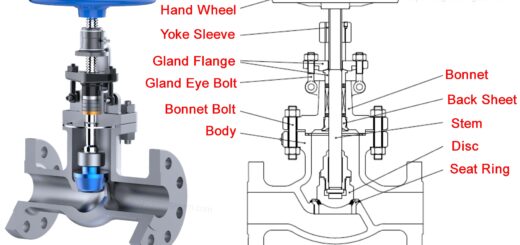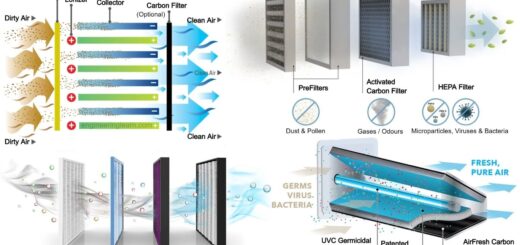5 Types of Blowers – Working, Application & Purpose [Explained with Complete Details]
![5 Types of Blowers - Working, Application & Purpose [Explained with Complete Details]](https://engineeringlearn.com/wp-content/uploads/2023/01/Blowers-1024x539.jpg)
Introduction
5 Types of Blowers – Working, Application & Purpose [Explained with Complete Details]: – A blower can be used for a number of tasks, including exhausting, cooling, and ventilation. It is an apparatus that increases air velocity by transferring gas and air between low and high pressures.
A blower is simple to utilise for a particular purpose and works best when the pressure need falls between the compressor and fan. Flow capacity and operating pressure determine the many distinct types of mechanical devices that are available. A blower’s function is to increase airflow, which removes pollutants like dust and dirt.
Types of Blowers
1. Positive Displacement Blowers: ( Types of Blowers )
Regardless of changes in pressure, a positive displacement blower maintains a consistent flow and speed. This makes it perfect for transporting air and neutral gases.
It eliminates the gas through the lowering segment and is very efficient. A positive displacement blower will capture and release the air in a straightforward manner. The blower has two different varieties and a straightforward function.
A) Turning Lobe Blowers
A turning curve blower is a sort of certain relocation blower that accompanies two turning rotors. Here the rotors turn in inverse bearings that suck in the air prior to pushing them out. It can create high air volume which makes it ideal for vacuum frameworks. The turning curve blower goes with various sorts of blowers and requires less support.
Be that as it may, they really do accompany a detriment and can be exceptionally clearly. Indeed, even the gaseous tension is extremely low making it reasonable for restricted applications. Something else is that it isn’t energy proficient.
B) Helical Screw Blowers
The helical screw blower is another kind of positive displacement blower. Where the primary rotor is located, it has two lobes. The second rotor’s flute will receive the rotor. The two rotors are kept from contacting one another by the helical screw blower’s construction. It can generate more air pressure than a rotary lobe blower. It also has a silent operation. Helical screw blowers also have the advantage of being energy-efficient and having a sealed design. This ensures that there are little chances of air leakage
2. Radiating Blowers: ( Types of Blowers )
Ideal for ventilation frameworks, a radiating blower helps in controlling air contamination and gas transportation. A typical kind of blower allows you to involve it for ventilation purposes. It works by steering the wind current and turns in 90 degrees. With a radial blower, there will be persistent gas move. While going the gas through the radial blower, builds the active energy. You can undoubtedly involve these sorts of blowers for different applications which require variable stream with high strain. It highlights turning impellers that assistance to release the gas.
3. Multistage Centrifugal Blowers: ( Types of Blowers )
A form of centrifugal blower that turns the machine to raise the air pressure is known as a multistage centrifugal blower. It has an electric motor that can withstand high pressure. Even the flow rate is really high, which makes it perfect for various applications. A multistage centrifugal blower can be used for a variety of tasks, such as improving landfill gas production, the wastewater treatment sector, and powering artificial lungs.
4. High-Speed Blowers: ( Types of Blowers )
With regards to fast blowers, it offers high strain and high stream. It is ideal for various purposes as it can offer a twofold pull. Furnished with an engine, it highlights impellers on each side. The straightforwardly coupled impellers let you interface it to an extremely durable magnet engine that has a variable recurrence drive.
5. Regenerative Blowers: ( Types of Blowers )
A regenerative blower has parts that don’t require oil, which makes maintenance a breeze. It is simple to utilise for a variety of low pressure applications. These blowers work by shifting the air molecules to create pressure. Impeller spins that will catch between the blades are a feature of it. It functions by forcing the air to move through non-positive displacement. The blower can be used in delicate conditions and is ideal for moving huge volumes of air.
Working of Blowers
Blowers are reasonable for a large number of utilizations and proposition many advantages. Whether it is cooling, ventilating, depleting, or drying, it works by providing cold or hot air. Blowers increment the pneumatic stress or gas strain with the assistance of a rotor. It takes the gas from the delta valve and makes the impellers pivot. This makes the radial power drives air. The blower will constantly pack gas with the expansion in pressure.
A) Positive Displacement/Rotary Lobe Blowers
The purpose of a positive displacement blower is simple but effective. On one side, an expanding part allows air or gas to enter, and on the other, a decreasing section allows it to leave. Positive displacement blowers simply trap air and then release it.
Regardless of variations in pressure, positive displacement blowers maintain a consistent speed and flow. These blowers can be used to transport both air and neutral gases.
Positive displacement blowers will continue to operate even if the discharge valve is stopped, which could result in the line bursting. Safety valves are essential for this blower because of this.
One sort of certain dislodging blower is the Rotary curve blowers which comprise of two rotors turning in inverse bearings. The blower sucks in air, and the curves twirl the air around prior to pushing it out.
One of the most mind-blowing parts of revolving curve blowers is they produce a high volume of air, which is essential for vacuum frameworks. Nonetheless, this air has low tension (around 15 psi), so a rotational curve blower isn’t the most ideal decision for applications that require high strain.
One more advantage to rotating curve blowers is that they take little support and work with most blower frameworks. Yet, they in all actuality do allow an air to get away, so they are not the most energy-proficient blower choice. They are unquestionably clearly yet can be calmed with silencers.
B) Helical Screw Blowers
The main rotor of each helical screw blower has two lobes. The flute of another rotor can accommodate this rotor. In order to prevent collisions, the two rotors rotate in a precise helical pattern. Compared to rotary lobe blowers, helical screw blowers typically create air at higher pressures. In comparison to rotary lobe blowers, they operate more silently.
These complex blowers are also energy-efficient choices. Helical screw blowers’ airtight construction results in a smooth air flow and little air leakage. Depending on the application, helical screw blowers can be used to transfer both gas and air.
C) Radial Blowers
Radial blowers are the most widely recognized blowers utilized in ventilation frameworks. They’re additionally used to ship gas and control air contamination.
At the point when an air stream goes through this blower’s turning impellers, it speeds up and volume. Diffusive blowers really shift the wind current’s course also. The air or gas enters the fan wheel, turns 90 degrees, and paces up prior to leaving the blower.
A radial blower is an optimal device to keep a persistent gas move. At the point when gas goes through a divergent blower, it expansions in dynamic energy. At the point when the gas leaves the diffusive blower, new gas enters to standardize the gas pressure.
One explicit sort of radial blower is known as a multistage diffusive blower. This blower is utilized for making pressure, coursing air, and making attractions. It can deal with high tension and high stream rates and is great for making high strain from little volumes of air. You can involve it for fish tank air circulation, gas meter testing, and in any event, fueling fake lungs.
D) Quick Blowers
Look for a high speed blower if you require a blower with a very high pressure and flow. These electric fans are powered by a motor. To create double suction, they have impellers on either side of the shaft.
High speed blowers have pressure and flow rates of up to 25 psi and 15,000 m3 per hour, respectively.
E) Regenerative Blowers
Regenerative blowers make tension by uprooting air atoms. The impeller twists to attract and afterward catch the air between each cutting edge. As the impeller keeps on turning, it pushes the air forward, where it returns to the lower part of the sharp edge.
These kinds of blowers are great decisions on the off chance that you really want to move huge air volumes at a low strain. Besides, they are not difficult to keep up with in light of the fact that they are self-greased up and contain no oil. Sans oil blowers are significant on the off chance that you don’t need oil delivered in the air. They are particularly significant in touchy conditions like food fabricating offices and medical clinics.
Application of Blowers
a) Takes in air
Air intake at manufacturing facilities that use equipment like presses or welding machines.
b) Vacuum Gripping
vacuum gripping suction to hold and raise paper or other processing materials, or to vacuum pack vegetables.
c) Suction
In factories that produce food, textiles, and other goods, suction is used to hold objects in place.
d) Extraction of Dust
Dust extraction in factories where powdered materials are used or when grinding is done.
e) Transportation
Transportation using machinery like pneumatic tubes or transporters for powdered materials.
f) Ventilation
Ventilation in clean rooms, trains, and other environments.
g) Blowing
Blowing for sandblasting, cleaning pipes, etc.
h) Supply of Air
Supplying air to incinerators, medical devices, or gas burners.
i) Aeration
Septic tank aeration or oxygen delivery to aquaculture ponds.
j) Chilling or Drying
Processing materials in a production line while drying or cooling.
Model Purposes in Business Items
- Artificially glamorizes
- Vacuum cleaners
- Dryers
- Cooling
- Humidifiers
- Ventilation fans
- Water warmers
- Cutting plotters
- Copiers
- Printers
- 3D printers
- Air cleaners
- Media transmission hardware
- Clinical hardware
- Home power devices
- Auto hardware
- Servers
- PCs
- Projectors
- Leaf blowers













